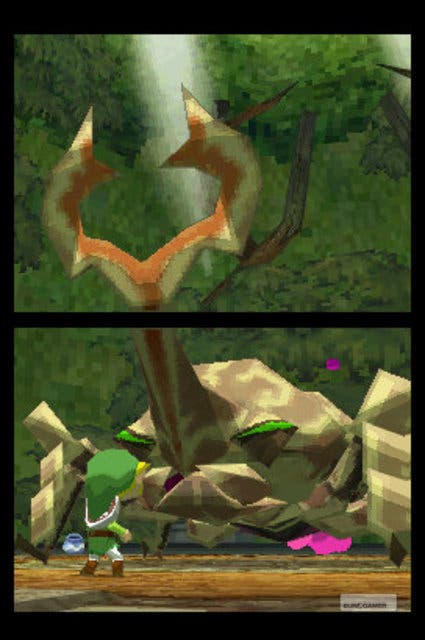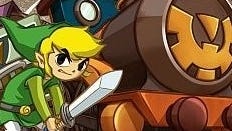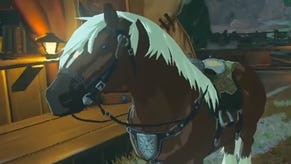The Legend of Zelda: Spirit Tracks
Toot sweet.
It's no surprise that the traditional bombs, bow and boomerang are back, enjoying the same pinpoint stylus control as in Phantom Hourglass, and the latter is put to some extremely imaginative uses. This year's magical musical instrument is the Spirit Pipes, a set of pan pipes you slide left and right while blowing into the microphone to sound; embarrassing in public, but more like playing an actual instrument than anything in Wii Music.
Spirit Tracks uses exactly the same all-stylus control scheme as Phantom Hourglass - Link follows where you point, faster if it's further away, with taps, swipes and circles executing sword attacks. It proved divisive two years ago, and for the life of me, I still can't imagine why. It's swift, snappy and unfailingly precise. It's the best non-traditional control scheme for a traditional game anywhere, and one of the most transparent and intuitive in Nintendo's long (and glorious) history of making great videogame controls. However, if you didn't like it then, you won't like it now.
Also divisive, longer ago, was the bold, bright cartooning of the Wind Waker art style. Few would dispute its suitability for these top-down DS games, though, especially with the portable really starting to show its age. The geometry and texturing in the environments are sometimes shockingly basic, but that's surely because the important things - the characters, the enemies, the train - are so detailed, so expressive, so exquisitely animated. Sound is magnificent too, with the trademark tinkles, smacks and booms, and the squeal and hiss and chuff of the train, popping out of the DS' speakers over catchy, rollicking folk music.

Spirit Tracks' world simply hops and hums with life, bursting out of the tiny confines of the console. And, unlike Phantom Hourglass, it's at its best away from the dungeon crawl. True, the locations are a little basic and clichéd; the strict separation between on-foot exploration and open-world navigation is still a trifle forced by the series' organic standards. But the web of characters and collectables and secrets and side-quests and errand-runs, etched out in the Spirit Tracks themselves, proves more compelling.
Perhaps it's just that the train is more fun, more involved and more inviting than Phantom Hourglass's paddle steamer. Freight and passenger runs are absorbing games in themselves - with a premium on a smooth or speedy ride as well as blasting away at hazards with your cannon - and there's a tactile joy in tugging at the whistle and cranking the levers that made this grown man feel about eight years old. On that note, it's worth pointing out that Spirit Tracks is probably the best game for children released this year - deep yet upbeat, without a whiff of condescension and with plenty of longevity.
It is, in other words, vintage Nintendo. Maybe a bit too vintage - Spirit Tracks is, like New Super Mario Bros. Wii, a straight rehash, a derivative sequel of the kind the company used not to make, and based on a decades-old template. You could easily mark it down for that. But that would belie the fact that it's also a tighter and more rounded game, crafted with more care, than not just Phantom Hourglass but most modern games for grown-up consoles. As an all-ages adventure with a spring in its step and a twinkle in its eye, it's hard to beat. All aboard!












